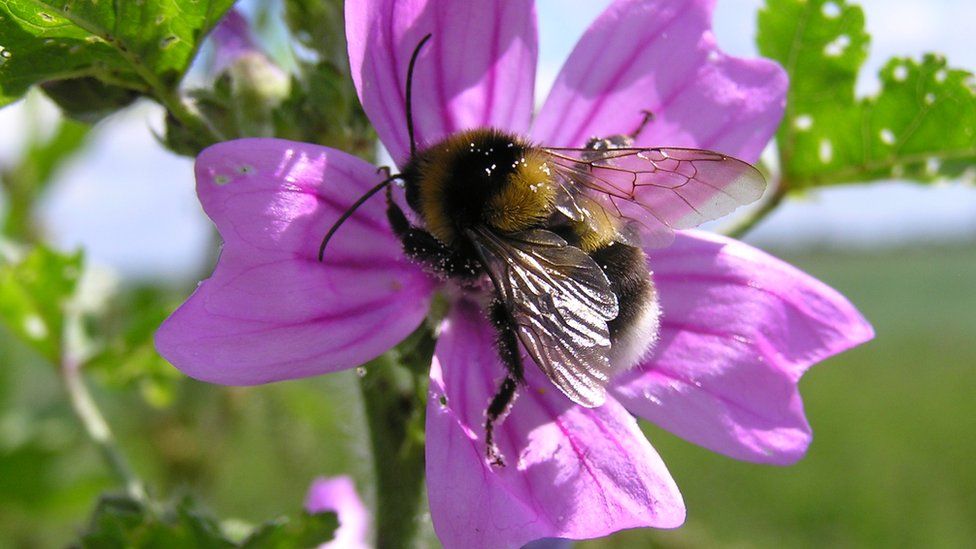Ruderal bumblebee's rare sighting in Wales
- Published

A species of bumblebee thought to have disappeared from Wales has been recorded in Carmarthenshire for the first time since 1973.
A ruderal bumblebee queen was spotted not far from the Brechfa home of a conservationist who said he "could not believe his eyes".
The ruderal's last UK strongholds are in south Kent and East Sussex, but a population has now been found in Wales.
There have been only two or three recent sightings, all in coastal Wales.
"It was such an amazing find, I asked 'can this really be happening?'," said Lawrence Harris, from the Bumblebee Conservation Trust in Wales.
He moved to Brechfa in November to work on a rare bee project for the Welsh government's threatened species scheme, Natur am Byth!
Mr Harris "popped for a walk" on Sunday along a farm track metres from his home with the trust's project manager, Dr Nikki Gammans, who spotted a distinctive bumblebee foraging on a foxglove.
"We are both like, 'is that a ruderal bumblebee'," he said. "I've done a lot of rare species mapping in Wales and so I knew [ruderals] were definitely not here."
They netted the bumblebee and it showed distinctive ruderal signs: even hair and wide, matching yellow bands.
"We were gobsmacked," he said.
Mr Harris and Dr Gammans spent the next day surveying a three-mile road between his home and the village of Brechfa.
"We found nine queens," he said. "It's really incredible to find several on farm tracks and among upland pasture, areas where you just don't find rare bees normally.
"It says a lot about the farmers here, farming low intensity, low stocking density which allows wildflowers to grow," he added.
The Bumblebee Conservation Trust said in a blog the ruderal is difficult to identify, which could be why it is "largely unrecorded in Wales".
It looks a lot like the more common garden bumblebee, it said, but ruderals have yellow bands that are broader or the same breath.
Their hair is also more even, "as if they've been given a crew cut," it added.
"It appears as though ruderal bumblebees have been here, undiscovered, for many years, living amongst the flower-rich roadside verges and meadows maintained by the many nature-loving local residents."
The Bumblebee Conservation Trust said it hoped to develop a project across Carmarthenshire and potentially other parts of Wales to help protect the rare bumblebee.
"We plan to work with landowners, farmers, smallholders and people from across the community to help create and manage the habitat needed for this iconic bee to thrive," it said.
"It was pure serendipity that the ruderal bumblebee has been rediscovered in inland Wales.
"There may be other undiscovered and unrecorded pockets of rare bumblebees and other insects across Carmarthenshire and Wales," it said.
"Species distribution maps show that they are largely confined to a handful of areas on the coast, but this discovery has shown that it is possible they are also inland."
- Published10 November 2019
- Published4 March 2015
- Published27 July 2013